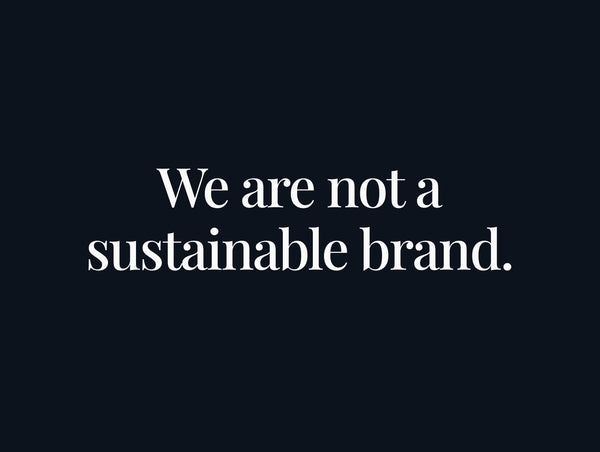

Managing An Invasive Species
A Conversation with Parker Kalan and Dr. Jim Locascio
For World Ocean Day, we were fortunate to sit down for a video chat between Parker Kalan from our Field Team and Dr. Jim Locascio from Mote Marine Laboratory & Aquarium in Sarasota, Florida, one of Noah’s 1% for the Planet partners. They discussed Lionfish, an invasive species that originated in Indo-Pacific oceans and is now swimming in Atlantic waters, as well as issues of conservation and general ocean habitat health.
Lionfish can harm reef ecosystems by killing off algae and eating helpful species like parrotfish. They have no known predators in their new environments, and they’re able to reproduce year-round. Over the last 10 years, they’ve invaded the Floridian waters off of Mote’s headquarters.
Dr. Jim Locascio is the Program Manager of Fisheries Habitat Ecology and Acoustics at Mote. His research background is on the use of passive acoustics to measure the sonic production of the drum fish (sciaenidae) associated with courtship and spawning. He now applies these methods to the spawning aggregations of reef fish, and uses other acoustic methods in his research, including SONAR and acoustic tags and receivers.
Parker Kalan lives in San Luis Obispo, CA and works as an environmental consultant and independent researcher. Some of Parker’s research includes the Pacific Lamprey’s role in water quality, and the Kellet’s Whelk range expansion in relation to changing ocean temperature and El Niños. Here’s what they had to say.
Our Lionfish tee releases this Thursday, June 10. 10% of all proceeds will be donated to Mote, an independent, nonprofit marine research institution comprising world-class marine scientists committed to the belief that the conservation and sustainable use of our oceans begins with research and education. You can learn more by clicking HERE.
 Dr. Jim Locascio (left) at the fifth annual Sarasota Lionfish Derby, an environmentally-friendly event that invites scuba divers to harvest this invasive species. Parker Kalan (right) in the harbor near his home in San Luis Obispo, CA.
Dr. Jim Locascio (left) at the fifth annual Sarasota Lionfish Derby, an environmentally-friendly event that invites scuba divers to harvest this invasive species. Parker Kalan (right) in the harbor near his home in San Luis Obispo, CA.
Parker: Let’s talk Lionfish Dr. JIm!
Dr. Jim: Lionfish, in the places where I was conducting research, were kind of a novelty at first. In the late 2000’s, it was big news if somebody saw one. Then, within the span of a few months around 2010, the news was whether somebody didn’t see them in certain locations. So it went from rarity to commonplace. That’s how abundant they became in a very short period of time.
This sudden population increase spawned a lot of projects to understand what their life history was like in the Atlantic, and what the impacts were on local habitats and native fish (including species important to both commercial fishing and local ecosystems). Pretty quickly, it looked like a real ecological disaster was afoot, and progressing rapidly. These fish are voracious, and seemed to eat whatever they could get–and a lot of it. They’re also prolific: they breed year-round, and females are estimated to produce up to 2 million eggs per year. Their habitats are deep and wide, so they’re capable of exploiting large areas of the ocean.
Parker: Yeah, it’s so interesting to think about why Lionfish–or more broadly, any invasive species–can become so dominant in a new environment.
Dr. Jim: Yeah, their historical lack of presence in a new environment means there can be a niche they can exploit. Nobody’s targeted them yet. They just don't have competition at the level that they’re used to. Whatever is controlling them in their native regions apparently doesn't exist, or isn’t tuned into the opportunity their presence creates. That was eye-opening to a lot of people.
So we started looking at what the Lionfish were eating. If we found important commercial grouper species in their stomach contents, it would have caused a stir. Instead, we found parrotfish, but that was a big deal in its own right, since parrotfish grazing on algae is an important control for coral reefs. If too much algae covers the reef, there’s less habitat for corals to recruit to and settle on, and an algae-covered reef can lead to much less biological diversity. Everything in a community has its role, and the parrotfish, as a grazer, helped keep algae levels down, which really helped the natural balance.
Parker: If you think about it, a coral reef ecosystem is like this well-constructed puzzle that’s been evolving and growing for millions and millions of years. And all of a sudden humans come in, start moving fish around, throw lionfish into the game, and the whole puzzle is shifted and it’s like a different game entirely.
Dr. Jim: Yeah, that’s a great way to put it.
Parker: What’s the scale of the impact lionfish have had?
Dr. Jim: Well, they’re now found throughout the Southeastern U.S. and the Gulf of Mexico. Their range certainly covers areas where there are a lot of commercial fish species, so the economic impact is fairly significant.
Parker: How does your research inform commercial fishing?
Dr. Jim: Well, our research is used by groups managing data associated with commercial fishing in the Gulf of Mexico. My data specifically comes from places that were once commercial fishing spots, but were overfished and subsequently incorporated into marine reserves and protected areas. In every case, fish populations have recovered in those locations when the pressure was removed. So the management of protected marine areas is a big deal because it works–the habitats can come back.

Parker: That's amazing. So to attempt to clear up one of the myths about what fish you should and shouldn’t eat, is it safe to say people should eat commercially fished lionfish to help control their population? I’ve actually heard they’re delicious.
Dr. Jim: They are delicious! And people should eat them!
Parker: So commercially fishing lionfish in the areas where they’re invasive benefits the ecosystem. I mean, that's kind of a new take on commercial fishing, right?
Dr. Jim: Yeah, that’s right, it’s an effort that’s been put in place and encouraged. Of course, there are some methods that are still illegal, including traps, but these restrictions don’t make it impossible. You know, our local grocery store chain in Florida, Publix, sells a lot of lionfish, all of which are spear-caught. Divers have to go down and get them.
Parker: I think it’s important to close off certain areas to commercial fishing for certain periods, but it’s important not to completely cut off such a huge resource that should be available to everyone. So navigating what parts of the ocean should be open and what parts should be protected is tricky. It's a tough question to weigh in on–I mean, I’m still figuring it out.
Dr. Jim: It’s a balance. You want to manage for sustainability. Some resources need to be exploited, but overexploitation can ruin it for everybody. So, yeah, it’s the old term of “maximum sustainable yield,” or the mathematical way to go about understanding, “Hey, how many can we take and still leave enough there?” They’re renewable resources if managed properly. We have an issue here with the goliath grouper. It was almost fished to extinction around 1990. There was a moratorium, and that species made a comeback. Now there’s consideration being given to opening limited harvests on it. So, you know, it can be a polarizing issue, and the truth is usually somewhere in the middle. When to open, when to close–those continue to be very challenging questions.
Parker: So what are some of the methodologies or techniques that have been implemented by state agencies or conservationists to promote healthy natural reefs? What kind of things are they doing?
Dr. Jim: It quickly became apparent that we weren’t going to be able to eradicate lionfish from their new habitats, so the realistic attitude was: let's try for local control, let's try to mitigate its impact by encouraging people to go out and harvest them. This is accomplished by holding things like fishing derbies, and by giving credits for harvesting lionfish that allow people to harvest more lobsters during certain seasons. So it’s about putting incentives in place, and doing a lot of public outreach and education to create awareness.
But really, there’s a limit to how effective we can be. And it’s ironic, because we’re usually on the other side–of trying to understand how to manage a species for its conservation. Here we're trying to manage a species for its elimination. But that’s always the case with exotics, and in Florida, we have exotic species both on land and in the sea. Everything seems to like it here!

Parker: Beside invasive species, what are some other threats to conservation efforts in Florida?
Dr. Jim: There're a lot of levels to that. Florida’s become the third or fourth most-populated state in the country, which puts huge strains on coastal areas, and alters habitats upstream and downstream. The biggest issue is water management, or controlling the quality of water and the delivery of water to coastal systems. Believe it or not, the nutrients people put into their lawns and house plants can, when they seep into local estuaries, lead to nutrient overloads in coastal systems that wind up damaging those habitats. This is probably one of Florida's biggest challenges. It affects our estuaries and the impact is really overarching.
Parker: How do you like to share ocean advocacy and what are some good ways for people to tune in if they want to get involved?
Dr. Jim: The simplest answer is really to just give people an opportunity to know about it–provide the information, help them understand some science, help them understand that there is some control over how these things are managed and balanced, and that there are attainable goals. We’re facing threats on a global level with climate change, and you can't really do much if you don't have good information to understand it and appreciate it.
Parker: What can we do today for a better tomorrow?
Dr Jim: Education, informing people, doing good science, putting the information out there, explaining it in ways that let everyone access it. Everybody can take that information, consider it for themselves, and exchange it with other people.
Information: that’s the key. We all have that innate curiosity. Kids just can't get enough information; they just love it. Don't waste the opportunity to share information. I think a little bit can go a long way too if it’s delivered properly and targeted well. You can’t overwhelm people with technical details, but you also can’t dumb things down too much. Maybe it stimulates more curiosity. Maybe it motivates people to, you know, to pick up more, to learn more.
Photos - Matt McKechnie


















